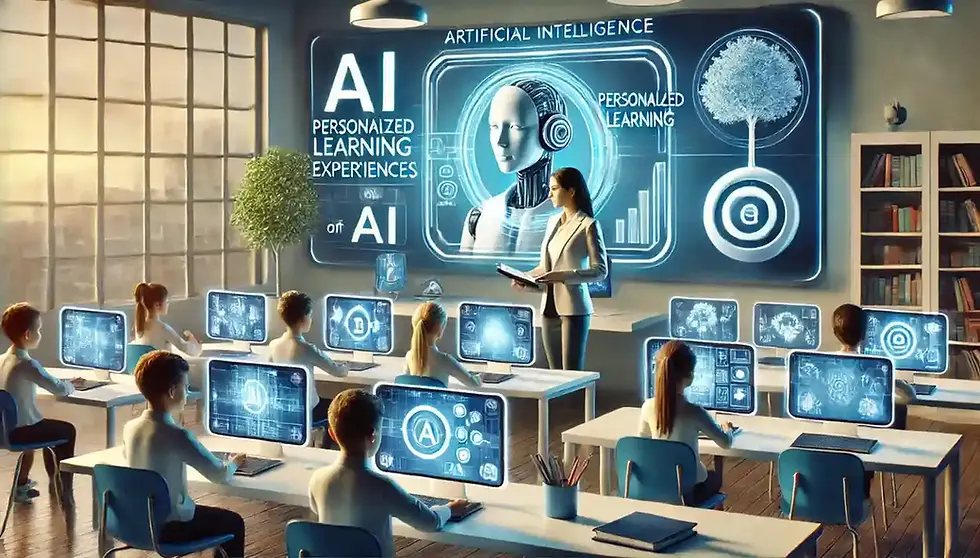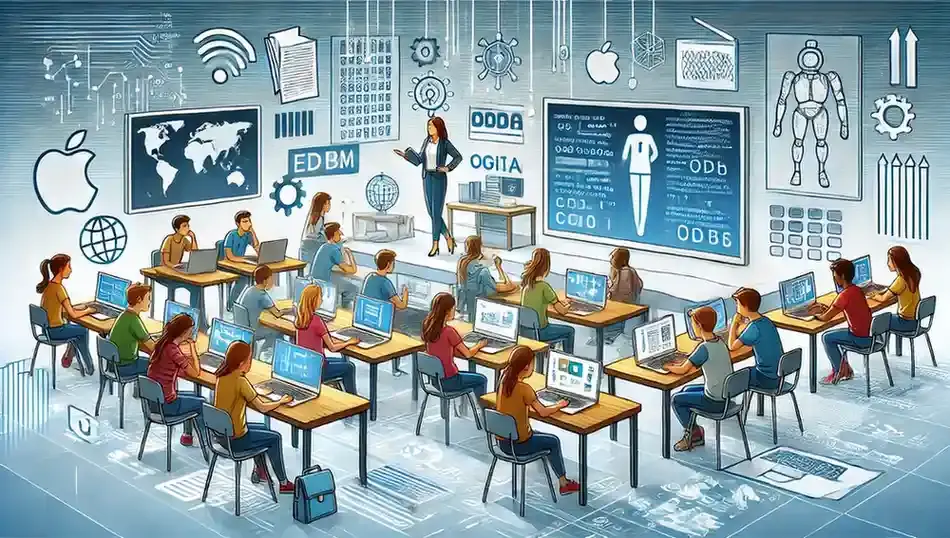Creating Custom Content with AI-Enabled Tools: A Guide for Educators
- Vinaya Souz
- Jul 29, 2024
- 3 min read
Discover how AI is revolutionizing education with personalized learning and custom content creation. Learn about AI-enabled tools, their benefits, and best practices for using AI authoring tools to enhance educational experiences

The Benefits of AI in Education
Enhanced Personalization
One of the most significant advantages of using AI in education is the ability to create personalized learning experiences. AI algorithms can analyze student data to identify learning patterns, strengths, and weaknesses. This information allows educators to design custom content that addresses the specific needs of each student, thereby enhancing learning outcomes.
2. Efficient Content Creation
AI authoring tools streamline the process of custom content creation. These tools can generate lesson plans, quizzes, and interactive activities based on predefined criteria and learning objectives. By automating repetitive tasks, AI tools save educators time and effort, allowing them to focus on more strategic aspects of teaching.
3. Improved Engagement
AI-powered tools can incorporate multimedia elements, such as videos, animations, and interactive simulations, to make lessons more engaging. This dynamic content can capture students' attention and maintain their interest, leading to better retention of information and a more enjoyable learning experience.
Step-by-Step Guide to Using AI Authoring Tools
1. Select the Right Tool
Choosing the appropriate AI authoring tool is the first step in creating custom content. Some popular options include TeachiQuo, Google Classroom, and Microsoft OneNote. Each platform offers unique features, so it's essential to select one that aligns with your teaching goals and requirements.
2. Set Up Your Account
Once you have selected an AI authoring tool, create an account and familiarize yourself with its interface. Most platforms offer tutorials and guides to help you get started. Take advantage of these resources to learn how to navigate the tool and utilize its features effectively.
3. Define Learning Objectives
Before creating content, clearly define your learning objectives. Identify the key concepts and skills you want your students to acquire. Having a clear roadmap will guide the content creation process and ensure that your lessons are focused and coherent.
4. Input Student Data
To personalize the learning experience, input relevant student data into the AI tool. This data can include academic performance, learning preferences, and areas of difficulty. The AI algorithms will use this information to tailor the content to meet each student's unique needs.
5. Create Custom Content
Using the AI authoring tool, begin creating your custom content. You can design lesson plans, quizzes, and interactive activities that align with your learning objectives. Incorporate multimedia elements to make the content more engaging and interactive.
6. Review and Refine
After creating the content, review it to ensure accuracy and relevance. Make any necessary adjustments to improve the quality and effectiveness of the lessons. It's also a good idea to seek feedback from colleagues or students to identify areas for improvement.
Best Practices for Personalized Learning
1. Continuous Assessment
Regularly assess student progress to identify areas where they may need additional support. AI tools can provide real-time feedback and analytics, helping you monitor student performance and make data-driven decisions.
2. Adaptive Learning Paths
Use AI to create adaptive learning paths that adjust to each student's pace and level of understanding. This approach ensures that students are continually challenged without feeling overwhelmed, promoting a more effective learning experience.
3. Interactive and Engaging Content
Incorporate interactive elements, such as quizzes, simulations, and games, to keep students engaged. AI tools can generate diverse content types that cater to different learning styles, making lessons more enjoyable and effective.
4. Collaborative Learning
Encourage collaborative learning by integrating group activities and discussions into your lessons. AI tools can facilitate collaboration by providing virtual spaces where students can work together and share ideas.
Conclusion
AI in education is revolutionizing the way educators create and deliver content, making it easier to provide personalized learning experiences. By leveraging AI authoring tools, teachers can efficiently design custom lessons that cater to the unique needs of each student. This approach not only enhances learning outcomes but also makes the educational process more engaging and enjoyable.
As technology continues to advance, the potential for AI in education will only grow. By embracing these innovations, educators can stay at the forefront of educational technology and ensure that their students receive the best possible learning experience. Start exploring the possibilities of AI in education today and transform your teaching practices with personalized, dynamic content.




Comments